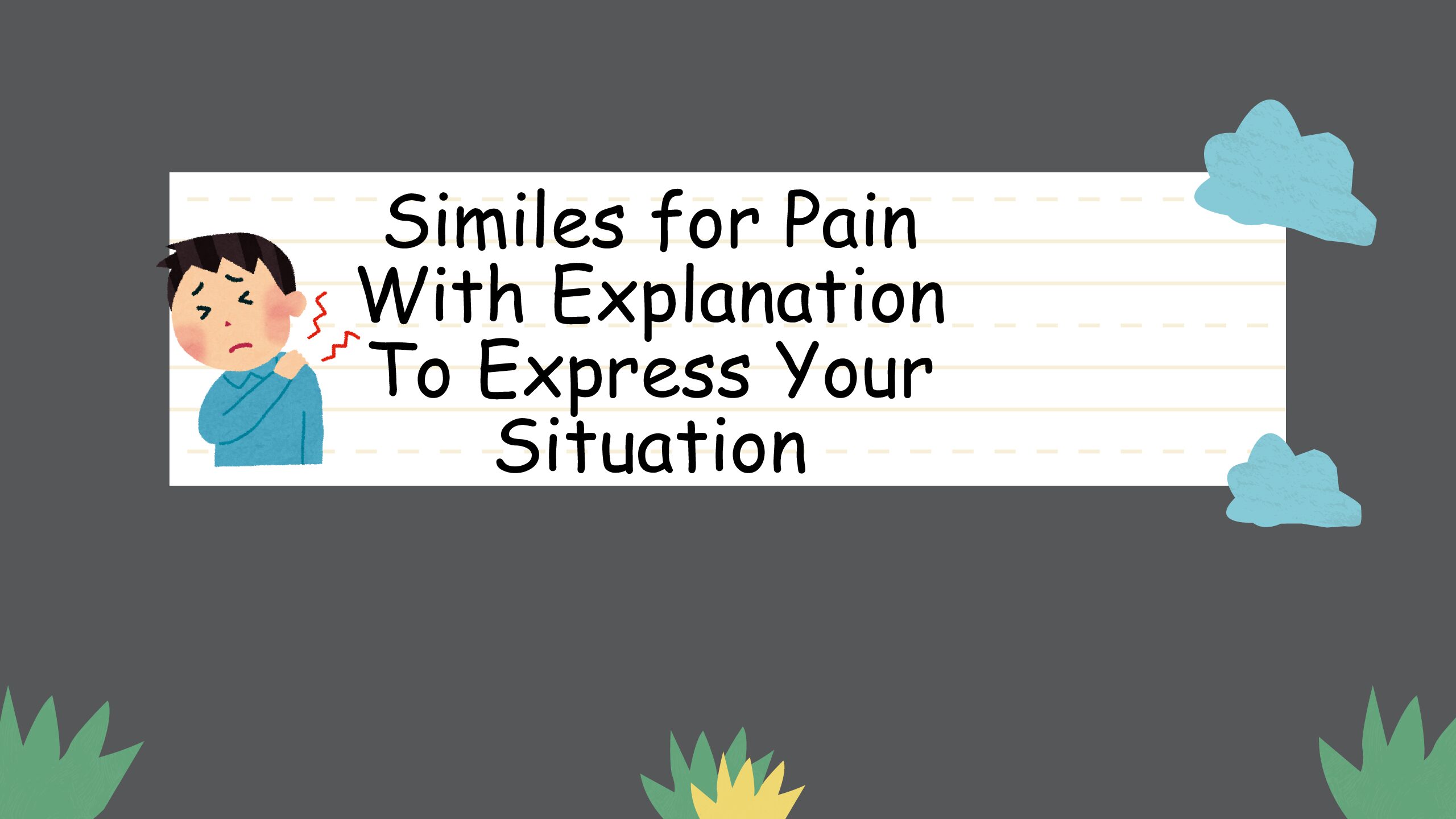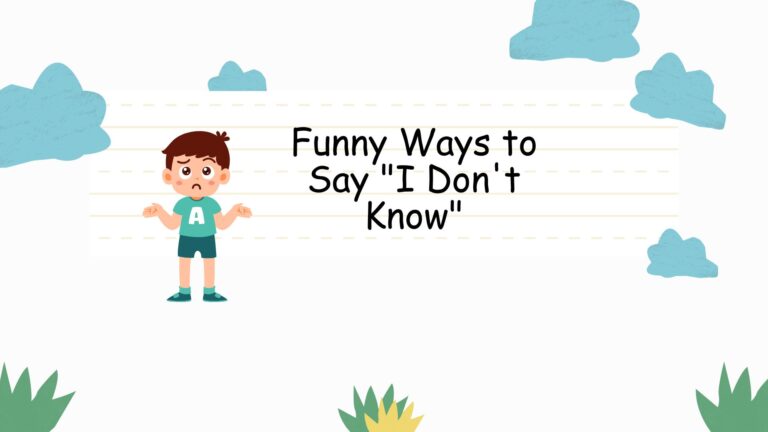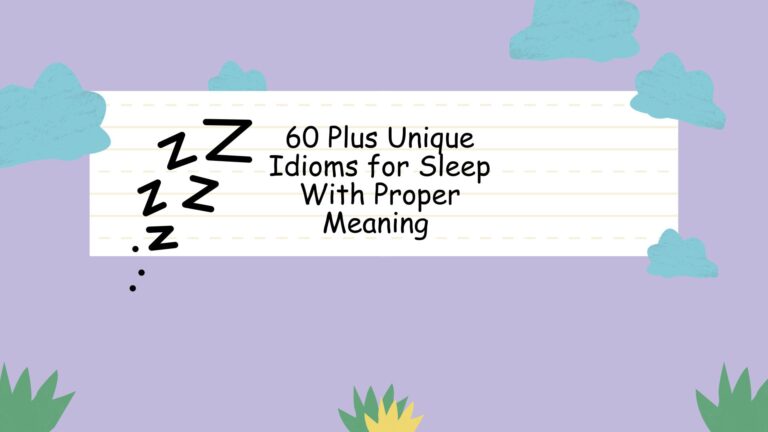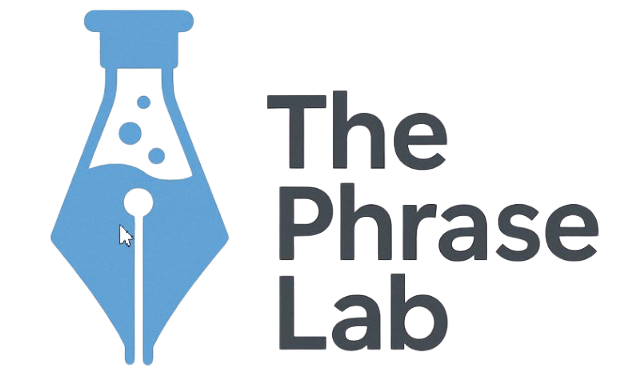
60 Classic Ways to Say “It Was Nice Talking to You”
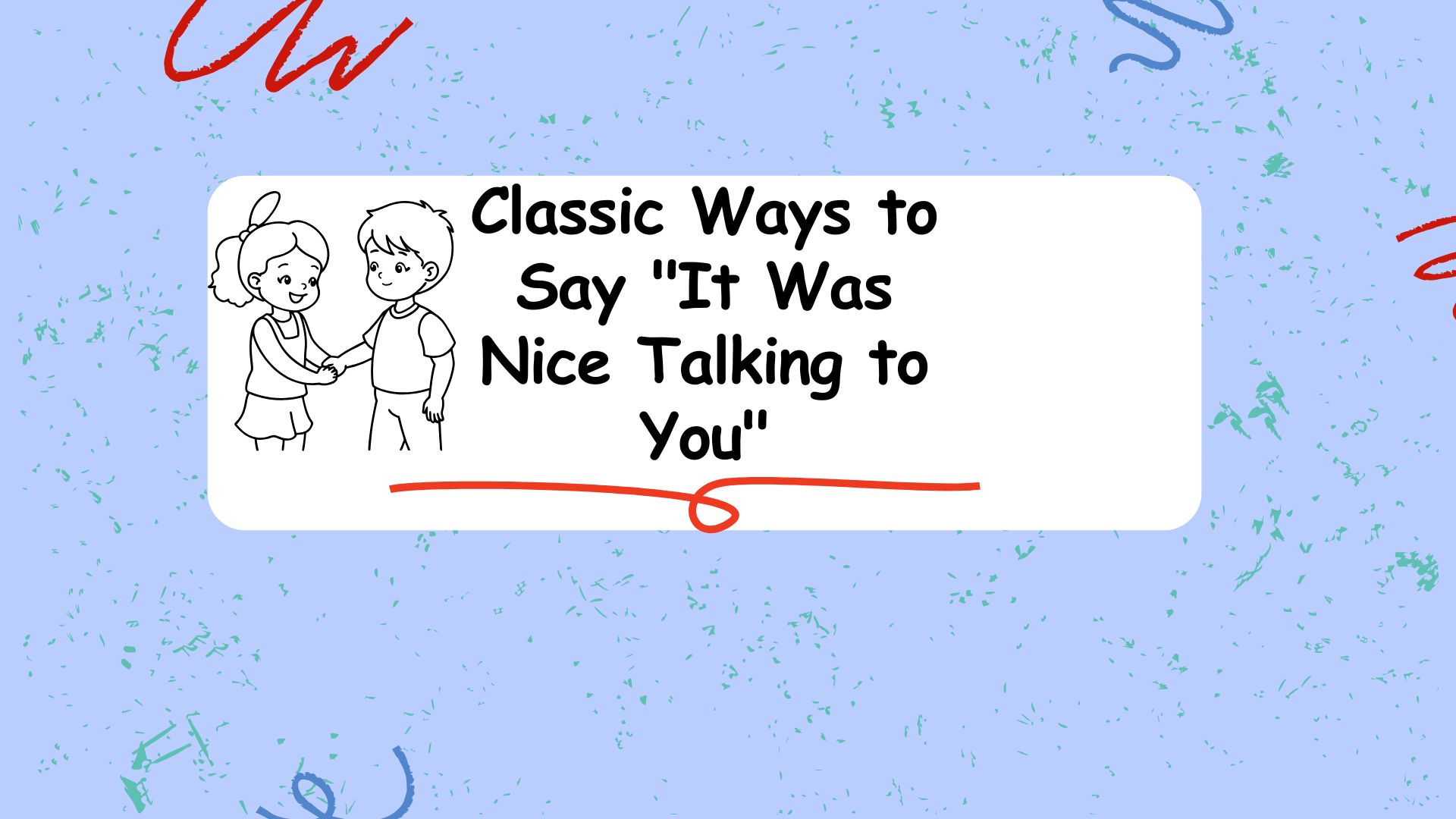
Mastering alternative ways to conclude a conversation politely and engagingly is crucial for effective communication. This article explores various phrases and expressions that add nuance and personality to your interactions, enhancing your overall conversational skills. Understanding these alternatives allows you to tailor your closing remarks to the specific context and relationship you have with the person you’re speaking to, whether it’s a formal business meeting or a casual chat with a friend. Here are the classic ways to say ” it was a nice talking to you”
Table of Contents
- Introduction
- Definition and Context
- Structural Elements
- Types of Alternatives
- Examples
- Usage Rules
- Common Mistakes
- Practice Exercises
- Advanced Topics
- FAQ
- Conclusion
Definition and Context
The phrase “It was nice talking to you” is a standard closing remark used to politely end a conversation. It expresses pleasure in the interaction and signals a desire to conclude the discussion amicably. However, relying solely on this phrase can become repetitive and might not always suit the specific context of the conversation. Therefore, understanding alternative ways to express this sentiment is essential for effective and engaging communication. The key is to choose a closing that not only conveys politeness but also reflects the tone and nature of the interaction.
These alternatives range from formal expressions suitable for professional settings to informal phrases perfect for casual conversations with friends and family. The context of the conversation, the relationship with the other person, and your desired level of formality all play crucial roles in determining the most appropriate closing remark. For instance, a formal business meeting might call for a more structured and professional closing, while a casual chat with a friend allows for a more relaxed and friendly farewell.
Structural Elements
The structure of these alternative phrases often involves variations on expressing pleasure, gratitude, or anticipation. They typically consist of a subject (often implied), a verb (such as “enjoyed,” “appreciate,” or “look forward to”), and an object or complement that refers to the conversation itself or the potential for future interaction. Understanding these structural elements allows you to create your own variations and tailor your closing remarks to specific situations.
For example, phrases like “I enjoyed our conversation” follow a simple subject-verb-object structure. Others, such as “Thank you for your time,” express gratitude for the time spent in conversation. More complex phrases might include clauses that express anticipation, such as “I look forward to hearing from you soon.” By analyzing these structural elements, you can gain a deeper understanding of how these phrases convey meaning and politeness.
Types of Alternatives
Different situations call for different levels of formality. Here’s a breakdown of alternative phrases categorized by formality and context:
Formal Alternatives
These phrases are suitable for professional settings, interactions with superiors, or situations where a high degree of respect is required. They typically use more sophisticated vocabulary and grammatical structures.
Semi-Formal Alternatives
These phrases strike a balance between formality and casualness, suitable for colleagues, acquaintances, or situations where a moderate level of respect is appropriate. They are less rigid than formal alternatives but still maintain a professional tone.
Informal Alternatives
These phrases are perfect for conversations with friends, family, or close colleagues where a relaxed and friendly tone is appropriate. They often use colloquial language and contractions.
Business-Oriented Alternatives
These phrases are tailored for business contexts. They usually include expressions of gratitude, anticipation for future collaboration, or direct statements about next steps.
Examples
Here are several examples of alternative phrases, categorized by their level of formality and context:
Formal Examples
These examples are best used in professional or highly respectful situations.
The following table illustrates formal alternatives to “It was nice talking to you,” each providing a sophisticated and respectful way to conclude a conversation. These examples are suitable for professional settings, interactions with superiors, or situations where a high degree of formality is required.
| Formal Alternatives | Context |
|---|---|
| “I appreciate your insights on this matter.” | Concluding a business discussion where valuable information was shared. |
| “Thank you for your time and consideration.” | Ending a formal meeting or interview. |
| “It has been a pleasure discussing this with you.” | Concluding a professional or academic conversation. |
| “I am grateful for the opportunity to have spoken with you.” | Expressing deep gratitude after a significant conversation. |
| “Your perspective has been invaluable.” | Acknowledging the importance of someone’s viewpoint. |
| “I value the conversation we had today.” | Highlighting the importance of the discussion. |
| “I trust our paths will cross again soon.” | Expressing hope for future interactions. |
| “I extend my sincere appreciation for your contribution.” | Acknowledging someone’s effort or input. |
| “It was an honor to engage in this discussion.” | Expressing respect and admiration for the conversation. |
| “I am most appreciative of your expertise.” | Recognizing someone’s knowledge and skills. |
| “Thank you for sharing your wisdom with me.” | Acknowledging valuable advice or guidance. |
| “I am deeply thankful for your guidance.” | Expressing gratitude for mentorship or direction. |
| “It has been an enlightening conversation.” | Describing the conversation as informative and insightful. |
| “I am pleased to have had this opportunity to connect.” | Expressing satisfaction with the interaction. |
| “Your input has been most helpful and is greatly appreciated.” | Concluding a meeting or discussion where valuable information was shared. |
| “We value your ongoing support and look forward to future collaborations.” | Ending a business meeting with a partner or client. |
| “I appreciate your dedication to this project and the insights you have provided.” | Concluding a discussion about a specific project. |
| “Your expertise in this area is invaluable, and I appreciate you sharing it.” | Recognizing and appreciating someone’s specialized knowledge. |
| “I am thankful for the opportunity to have learned from your experiences.” | Expressing gratitude for the knowledge gained from the conversation. |
| “We look forward to continuing this dialogue and exploring potential synergies.” | Ending a strategic planning meeting. |
| “I am thankful for your time and willingness to share your expertise with me.” | Showing sincere appreciation for the other person’s contributions. |
| “I appreciate the depth of your insights and the clarity you brought to this discussion.” | Complimenting the other person’s contributions to the conversation. |
| “It has been a privilege to hear your perspective on this matter.” | Treating the conversation as an honor. |
| “I am grateful for your time and the valuable information you have provided. | Ending a conversation with someone who has been particularly helpful. |
| “We value your input and look forward to incorporating your suggestions into our plans.” | Ending a collaborative meeting with a clear indication of next steps. |
| “I extend my deepest gratitude for your insights and support.” | Showing profound appreciation to the other person. |
| “I am thankful for your time and the opportunity to discuss this important matter with you.” | Treating the conversation as an important opportunity. |
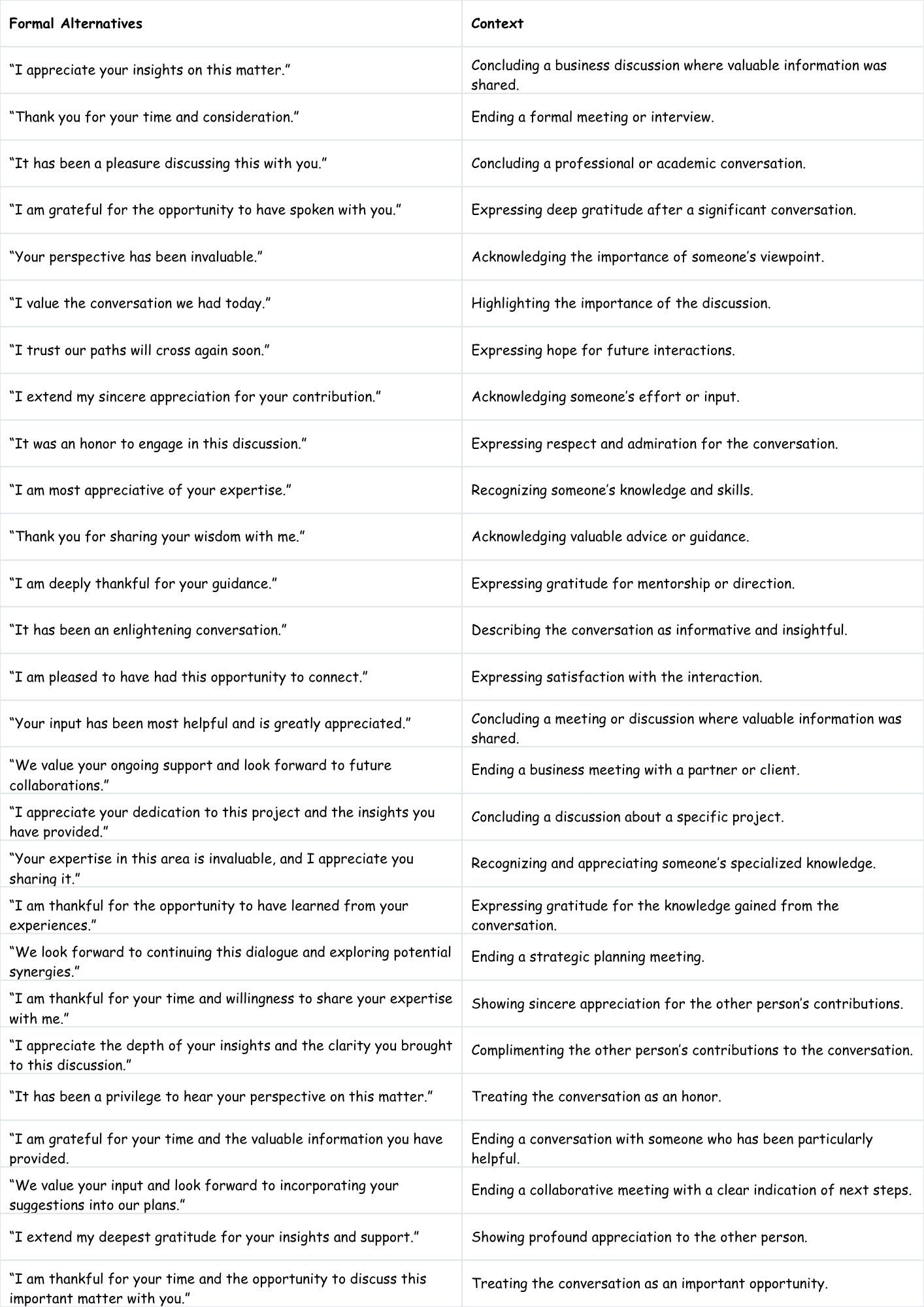
Semi-formal Examples: Ways to Say ” It Was Nice Talking to You”
These examples are suitable for colleagues, acquaintances, or situations where a moderate level of respect is appropriate.
The following table presents semi-formal alternatives to “It was nice talking to you,” offering a balanced approach that is suitable for interactions with colleagues, acquaintances, or situations requiring a moderate level of respect. These phrases are less rigid than formal options but still maintain a professional and polite tone.
| Semi-Formal Alternatives | Context |
|---|---|
| “I enjoyed our chat.” | Concluding a pleasant conversation with a colleague. |
| “Thanks for the conversation.” | A simple and polite way to end a discussion. |
| “It was good speaking with you.” | A friendly yet professional closing. |
| “I appreciate you taking the time to talk.” | Acknowledging the other person’s time and effort. |
| “I’m glad we had a chance to discuss this.” | Expressing satisfaction with the conversation’s outcome. |
| “Thanks for your input.” | Acknowledging someone’s contribution to the conversation. |
| “I look forward to our next conversation.” | Expressing anticipation for future discussions. |
| “It was a pleasure connecting with you.” | Highlighting the positive aspect of the interaction. |
| “I appreciate your perspective on this.” | Acknowledging and valuing someone’s viewpoint. |
| “Thanks for sharing your thoughts.” | Expressing gratitude for someone’s opinions. |
| “I found our conversation very helpful.” | Describing the conversation as beneficial. |
| “I am glad we had this discussion.” | Expressing satisfaction with the outcome of the conversation. |
| “Thanks for your time and insights.” | Acknowledging the other person’s time and valuable contributions. |
| “It was great to hear your thoughts on this.” | Expressing interest in the other person’s opinions. |
| “Thanks for the update.” | Concluding a conversation where you received new information. |
| “I appreciate you keeping me in the loop.” | Acknowledging someone’s effort to keep you informed. |
| “It was helpful to get your perspective.” | Expressing the value of someone’s viewpoint. |
| “I’m glad we had a chance to connect.” | Highlighting the positive aspect of the interaction. |
| “Thanks for clarifying that for me.” | Acknowledging someone’s help in understanding something. |
| “I appreciate you taking the time to explain that.” | Expressing gratitude for someone’s detailed explanation. |
| “I enjoyed hearing your thoughts on this subject.” | Ending a conversation where you have heard the other person’s thoughts. |
| “I appreciate you taking the time to discuss this with me. | Ending a conversation with someone who is busy. |
| “I’m grateful for your help with this matter.” | Ending a conversation where someone has been helpful. |
| “Thanks for your patience and understanding.” | Ending a conversation with someone who has been helpful. |
| “I’m glad we had the chance to talk things through.” | Ending a conversation where you have resolved a problem. |
| “I value your input and appreciate your willingness to share your thoughts.” | Ending a conversation where someone has been helpful. |
| “I am thankful for the opportunity to have learned from you today.” | Ending a conversation where you have learned something new. |
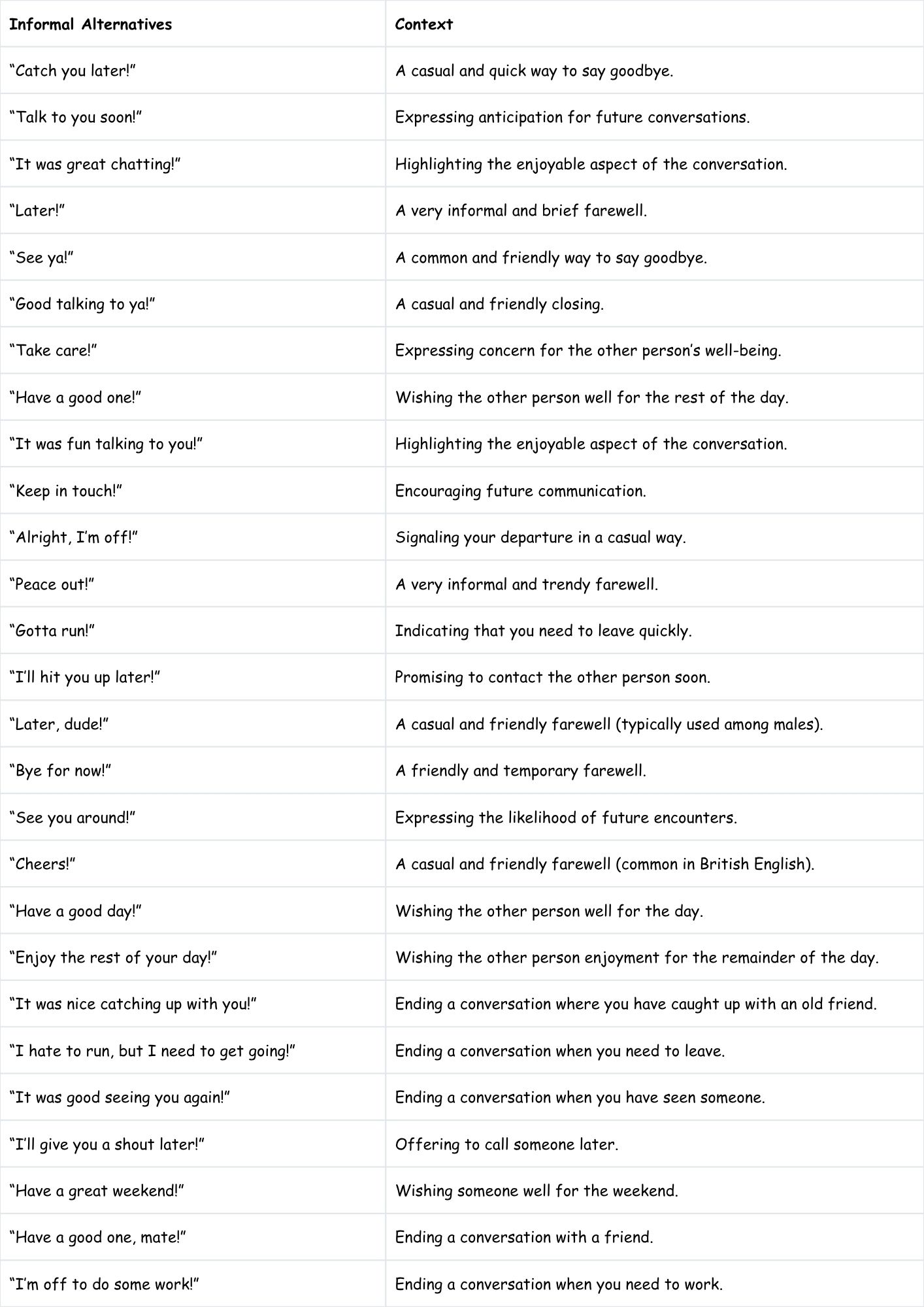
Informal Examples
These examples are perfect for conversations with friends, family, or close colleagues where a relaxed and friendly tone is appropriate.
The following table offers informal alternatives to “It was nice talking to you,” which are ideal for conversations with friends, family, or close colleagues where a relaxed and friendly tone is appropriate. These phrases often use colloquial language and contractions to convey a sense of closeness and familiarity.
| Informal Alternatives | Context |
|---|---|
| “Catch you later!” | A casual and quick way to say goodbye. |
| “Talk to you soon!” | Expressing anticipation for future conversations. |
| “It was great chatting!” | Highlighting the enjoyable aspect of the conversation. |
| “Later!” | A very informal and brief farewell. |
| “See ya!” | A common and friendly way to say goodbye. |
| “Good talking to ya!” | A casual and friendly closing. |
| “Take care!” | Expressing concern for the other person’s well-being. |
| “Have a good one!” | Wishing the other person well for the rest of the day. |
| “It was fun talking to you!” | Highlighting the enjoyable aspect of the conversation. |
| “Keep in touch!” | Encouraging future communication. |
| “Alright, I’m off!” | Signaling your departure in a casual way. |
| “Peace out!” | A very informal and trendy farewell. |
| “Gotta run!” | Indicating that you need to leave quickly. |
| “I’ll hit you up later!” | Promising to contact the other person soon. |
| “Later, dude!” | A casual and friendly farewell (typically used among males). |
| “Bye for now!” | A friendly and temporary farewell. |
| “See you around!” | Expressing the likelihood of future encounters. |
| “Cheers!” | A casual and friendly farewell (common in British English). |
| “Have a good day!” | Wishing the other person well for the day. |
| “Enjoy the rest of your day!” | Wishing the other person enjoyment for the remainder of the day. |
| “It was nice catching up with you!” | Ending a conversation where you have caught up with an old friend. |
| “I hate to run, but I need to get going!” | Ending a conversation when you need to leave. |
| “It was good seeing you again!” | Ending a conversation when you have seen someone. |
| “I’ll give you a shout later!” | Offering to call someone later. |
| “Have a great weekend!” | Wishing someone well for the weekend. |
| “Have a good one, mate!” | Ending a conversation with a friend. |
| “I’m off to do some work!” | Ending a conversation when you need to work. |
Business-Oriented Examples
These examples are tailored for business contexts. They usually include expressions of gratitude, anticipation for future collaboration, or direct statements about next steps.
The following table presents business-oriented alternatives to “It was nice talking to you,” tailored for professional contexts. These phrases typically include expressions of gratitude, anticipation for future collaboration, or direct statements about next steps to ensure clarity and professionalism in business communications.
| Business-Oriented Alternatives | Context |
|---|---|
| “I look forward to our next meeting.” | Expressing anticipation for a future meeting. |
| “Thank you for your collaboration.” | Acknowledging and appreciating teamwork. |
| “We appreciate your business.” | Expressing gratitude for a client’s patronage. |
| “I’ll be in touch soon with the next steps.” | Providing a clear indication of future actions. |
| “We value your partnership.” | Highlighting the importance of a business relationship. |
| “I appreciate your prompt response.” | Acknowledging someone’s quick reply. |
| “We look forward to working with you on this.” | Expressing enthusiasm for a collaborative project. |
| “Thank you for your continued support.” | Acknowledging ongoing assistance or patronage. |
| “I’ll send you a follow-up email shortly.” | Promising to provide further information via email. |
| “We appreciate your feedback.” | Acknowledging and valuing someone’s opinions. |
| “I’m glad we could align on this.” | Expressing satisfaction with reaching an agreement. |
| “I value your input and appreciate your willingness to share your thoughts.” | Ending a conversation where someone has been helpful. |
| “We appreciate the opportunity to collaborate with you on this project.” | Expressing enthusiam and gratitude for the opportunity. |
| “Thank you for your time and attention to this matter.” | Respectfully concluding a business discussion. |
| “I look forward to your insights and contributions as we move forward.” | Ending a conversation with a call to action. |
| “We appreciate your business and the opportunity to serve you.” | Expressing enthusiam and gratitude for the opportunity. |
| “I am thankful for the opportunity to have learned from you today.” | Ending a conversation where you have learned something new. |
| “We look forward to continuing this dialogue and exploring potential synergies.” | Expressing enthusiam about future collaborations. |
| “We are thankful for the opportunity to get to know you and your company better.” | Expressing gratefulness for new connections. |
| “I am thankful for the opportunity to have had this discussion with you and to have learned from your experience.” | Expressing gratefulness for the conversation. |
| “We appreciate your time and consideration, and we look forward to a successful partnership.” | Expressing gratefulness and anticipation for the opportunity. |
| “Thank you for your time and expertise. We look forward to the next steps in this process.” | Showing gratefulness to the other person and expressing what’s next. |
| “We appreciate your efforts and the positive impact you have made.” | Acknowledging someone’s effort or input. |
| “We value your continued partnership and the trust you have placed in us.” | Highlighting the importance of a business relationship. |
| “We look forward to further discussions and the opportunity to collaborate on future projects.” | Expressing enthusiasm about future collaborations. |
| “Thank you for your time and consideration, and we look forward to the possibility of working together.” | Expressing gratefulness and anticipation for the opportunity. |
| “We appreciate your insights and the strategic direction you have provided.” | Acknowledging someone’s effort or input. |
Usage Rules
Choosing the right alternative depends heavily on the context. Consider these rules:
- Formality: Match your closing to the overall tone of the conversation. Avoid informal phrases in formal settings, and vice versa.
- Relationship: Use more casual phrases with people you know well and more formal phrases with superiors or new acquaintances.
- Context: Tailor your closing to the specific situation. For example, if you’ve promised to follow up, mention that in your closing.
- Sincerity: Ensure your closing feels genuine. Avoid using phrases that sound insincere or forced.
Common Mistakes
Here are some common mistakes to avoid when using alternative phrases:
| Incorrect | Correct | Explanation |
|---|---|---|
| “See you, Mr. Smith!” | “Goodbye, Mr. Smith.” or “It was nice talking to you, Mr. Smith.” | Using an informal closing with someone you should address formally. |
| “I appreciate it to talk with you.” | “I appreciate talking with you.” | Incorrect grammar; “talking” should be a gerund. |
| “I look forward to see you soon.” | “I look forward to seeing you soon.” | Incorrect grammar; “seeing” should be a gerund. |
| “Have a good one!” (in a formal setting) | “Have a good day.” or “I hope you have a pleasant day.” | Using an informal closing in a formal setting. |
| “Thanks for your time!” (without any other closing) | “Thank you for your time. It was nice talking to you.” | Ending abruptly without a proper closing. |
| “Later!” (in a business email) | “Sincerely,” or “Best regards,” | Using a casual closing in a business email. |
| “I hope to talk to you!” | “I hope to talk to you again soon!” | Missing “again” or “soon” to suggest future plans. |
| “It was nice to talking to you.” | “It was nice to talk to you.” | Incorrect grammar; “talk” should be the infinitive form. |
| “Talk soon!” (in a formal setting) | “I look forward to speaking with you again soon.” | Using an informal closing in a formal setting. |
Practice Exercises
Test your understanding with these exercises:
Exercise 1: Choose the best alternative.
Select the most appropriate alternative to “It was nice talking to you” for each scenario.
| Scenario | Alternatives | Answer |
|---|---|---|
| Talking to your boss after a project meeting. | a) “Later!” b) “I appreciate your insights on this matter.” c) “Catch you later!” | b) “I appreciate your insights on this matter.” |
| Ending a phone call with a close friend. | a) “Thank you for your time and consideration.” b) “Talk to you soon!” c) “I value our partnership.” | b) “Talk to you soon!” |
| Concluding a business meeting with a potential client. | a) “Have a good one!” b) “We appreciate your business.” c) “See ya!” | b) “We appreciate your business.” |
| Finishing a conversation with a colleague about a shared project. | a) “It was great chatting!” b) “We value your partnership.” c) “Thanks for your input.” | c) “Thanks for your input.” |
| Ending a formal interview. | a) “See you around!” b) “Thank you for your time and consideration.” c) “Peace out!” | b) “Thank you for your time and consideration.” |
| Concluding a call with customer support. | a) “I look forward to our next meeting.” b) “Thank you for your continued support.” c) “I’ll hit you up later!” | b) “Thank you for your continued support.” |
| Talking to a neighbor you see often. | a) “Have a good one!” b) “We look forward to working with you on this.” c) “I am grateful for the opportunity to have spoken with you.” | a) “Have a good one!” |
| Ending a discussion with a mentor. | a) “I value the conversation we had today.” b) “Later, dude!” c) “Gotta run!” | a) “I value the conversation we had today.” |
| Concluding a presentation to senior management. | a) “I extend my sincere appreciation for your contribution.” b) “Catch you later!” c) “I’ll give you a shout later!” | a) “I extend my sincere appreciation for your contribution.” |
| Finishing a casual chat with a coworker you are close to. | a) “I am most appreciative of your expertise.” b) “It was great chatting!” c) “Thank you for your collaboration.” | b) “It was great chatting!” |
Exercise 2: Rewrite the sentences.
Rewrite the following sentences using a more appropriate alternative to “It was nice talking to you,” considering the context.
| Original Sentence | Context | Rewritten Sentence |
|---|---|---|
| “It was nice talking to you,” said to a potential investor. | Concluding a pitch meeting. | “We appreciate your time and consideration, and we look forward to the possibility of working together.” |
| “It was nice talking to you,” said to a close friend. | Ending a casual phone call. | “Talk to you soon!” |
| “It was nice talking to you,” said to a new colleague. | Concluding a first meeting. | “It was good speaking with you. I look forward to our next conversation.” |
| “It was nice talking to you,” said to your manager. | After receiving feedback on your performance. | “Thank you for your time and input; I appreciate your guidance.” |
| “It was nice talking to you,” said to a customer. | After resolving their issue. | “Thank you for your continued support, and please don’t hesitate to reach out if you need further assistance.” |
| “It was nice talking to you,” said after a long meeting. | After a long meeting with coworkers. | “I value your input and appreciate your willingness to share your thoughts.” |
| “It was nice talking to you,” said to family. | Ending a catch-up call with family. | “It was nice catching up with you!” |
| “It was nice talking to you,” said to someone who gave good advice. | Ending a conversation with someone who has been helpful. | “I’m grateful for your help with this matter.” |
| “It was nice talking to you,” said to someone who is busy. | Ending a conversation with someone who is busy. | “I appreciate you taking the time to discuss this with me. |
| “It was nice talking to you,” said to a new connection. | Ending a conversation with a new connection. | “We are thankful for the opportunity to get to know you and your company better.” |
Advanced Topics
For advanced learners, consider these nuances:
- Cultural Differences: Different cultures have different norms for closing conversations. Research appropriate closings for international interactions.
- Subtlety: Pay attention to non-verbal cues. Sometimes a simple nod and smile are more effective than a lengthy closing.
- Personalization: Tailor your closing to the individual. Referencing something specific you discussed shows you were engaged.
FAQ
Here are some frequently asked questions about alternative closings:
- Is “Goodbye” always appropriate?While “Goodbye” is a universally understood farewell, it can sound abrupt in some situations. Using alternative phrases adds warmth and personality to your closing. Context matters, and choosing a more specific phrase can enhance the interaction.
- How formal should I be in a work email?In work emails, maintain a professional tone. Use closings like “Sincerely,” “Best regards,” or “Thank you for your time” depending on your relationship with the recipient and the email’s content. Avoid overly casual phrases like “Cheers” or “Later.”
- What if I forget someone’s name?If you forget someone’s name, avoid using their name in the closing. Opt for a general closing like “It was nice talking to you” or “I enjoyed our conversation.” You can also try to subtly ask for their name again earlier in the conversation.
- Can I use contractions in formal settings?In formal settings, it’s generally best to avoid contractions as they can make your language sound less professional. Use full forms like “I am” instead of “I’m” and “it is” instead of “it’s.” However, this rule is flexible and depends on the specific context and your relationship with the other person.
- How can I make my closing sound more sincere?To make your closing sound more sincere, maintain eye contact (if in person), smile, and use a warm and friendly tone. Referencing something specific you discussed shows you were engaged and listening attentively. For example, “I’ll be sure to check out that book you recommended.”
- What if I don’t have future plans with the person?If you don’t have future plans with the person, you can use a general closing like “Have a great day!” or “Take care!”.
- Is it okay to use the same closing every time?While there’s nothing inherently wrong with using the same closing every time, it can become repetitive and make your interactions feel less personal. Varying your closings shows that you are thoughtful and engaged in the conversation.
- How can I adapt my closing to be inclusive?To ensure your closing is inclusive, avoid gendered or culturally specific phrases that might exclude or offend someone. Use neutral and respectful language that is appropriate for a diverse audience. If in doubt, a simple and sincere “Thank you for your time” is always a safe bet.
Conclusion
Mastering alternative ways to say “It was nice talking to you” is a valuable skill for effective communication. By understanding the nuances of formality, context, and relationship, you can tailor your closing remarks to leave a lasting positive impression. Remember to consider the specific situation and choose a closing that feels genuine and appropriate. By incorporating these alternative phrases into your repertoire, you’ll enhance your conversational skills and build stronger relationships.
In summary, varying your closing remarks can make your conversations more engaging and impactful. Practice using different phrases in various contexts to become more comfortable and confident in your communication. Pay attention to how others close conversations and adapt their techniques to suit your own style. With a little effort, you can master the art of the perfect closing and leave a positive impression on everyone you meet.

